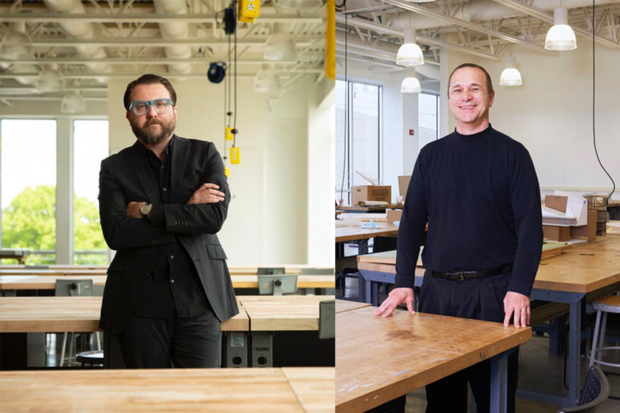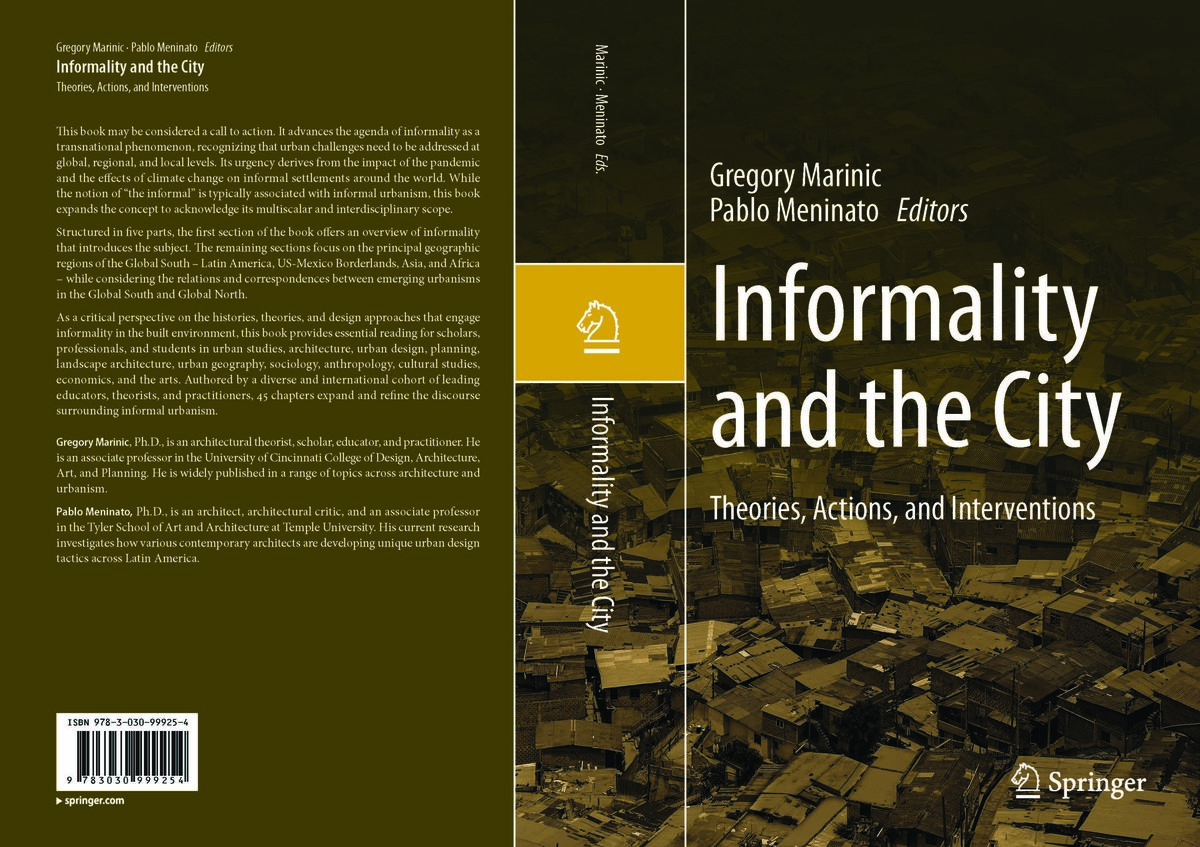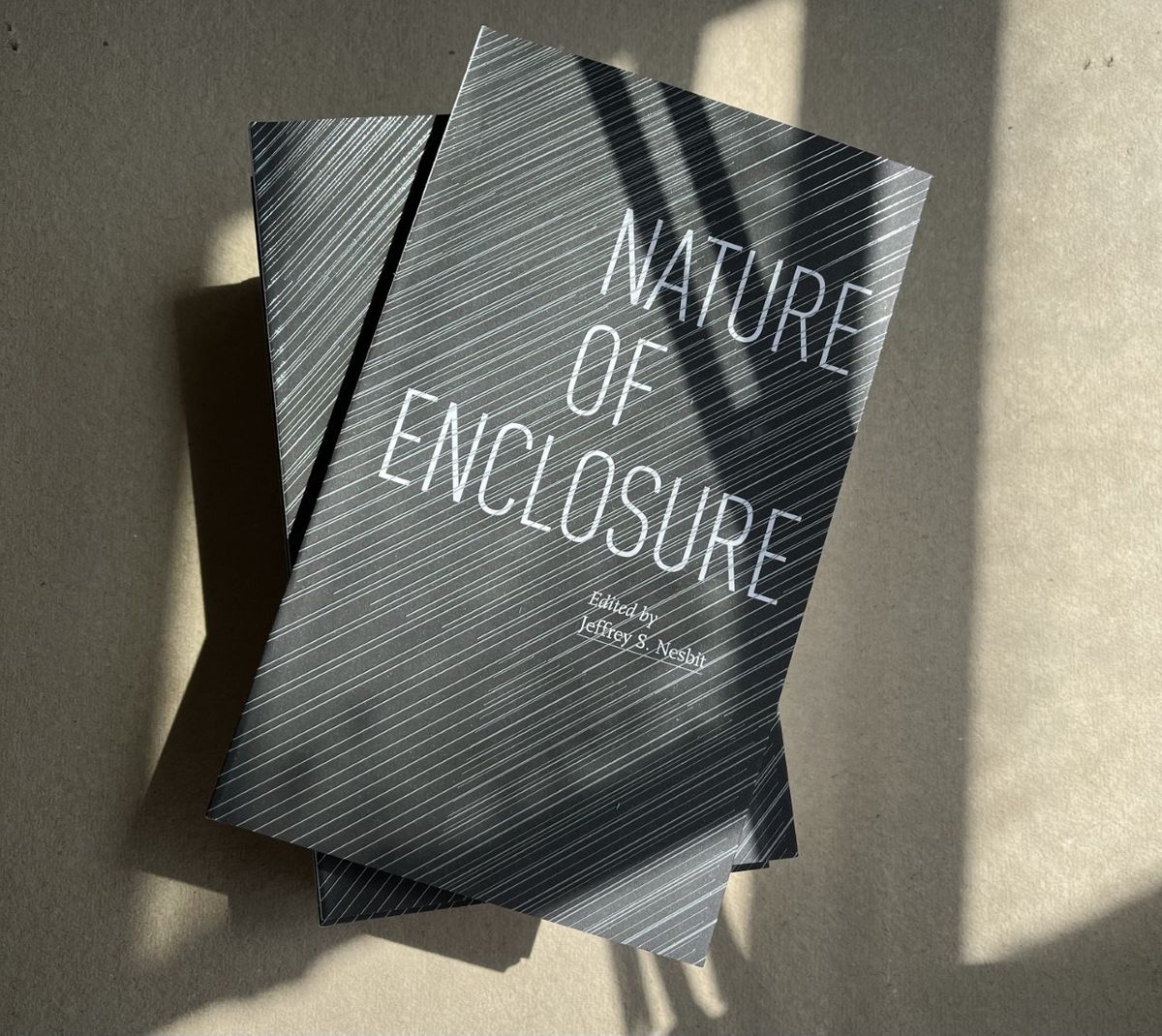Architecture Professors Pablo Meninato, PhD and Jeffrey Nesbit Discuss Their Recent Books

Pablo Meninato, PhD, Associate Professor of Architecture and Jeffrey Nesbit, Assistant Professor of Architecture each published books in 2022. Meninato's Informality and the City: Theories, Actions and Interventions explores architecture and environmental design’s impact on informal spaces and Nesbit's Nature of Enclosure unpacks the evolution of designing enclosed spaces and what that means for developing technology and civilization. Nesbit, who is new to Tyler this academic year, focuses much of his outside work and research on urbanization, infrastructure, and the evolution of “technical lands.” Meninato studies the principles and mechanisms that govern an architectural and urban project. Both Nesbit and Meninato spoke about researching, writing and assembling an educational publication, and how that informs their teaching at Tyler.
What is the premise of your book?
PM: The book Informality and the City: Theories, Actions and Interventions, (Springer Rotterdam, 2022) co-edited with Dr. Gregory Marinic, shapes a renewed understanding of informality by developing new scholarship, methods, planning approaches, design tactics, and implementation strategies. It views informality as a provocation that re-situates criteria and design of the built environment. In this context, urban design—rooted in its commitment to publicness and spatial multiplicity—acts as a central mechanism to create opportunities that network singular, episodic constructs of informal development into larger urban systems. Through this lens, the book advocates for social justice in marginalized communities by demonstrating ways of working that improve the daily lives and futures of residents.
JN: Nature of Enclosure (Actar, 2022) is a series of conversations among experts from a range of disciplines, including architects, landscape architects, architectural historians, design theory scholars, geographers, historians of science and technology, and professionals at the intersection of architecture and the environment.
What was the research and writing process like?
PM: Together with my academic partner, we embarked on a multi-year research and publishing project examining how various contemporary architects and designers are developing interventions in informal settlements across Latin America. Since we couldn’t travel to many cities due to the pandemic, in 2020 we decided to develop a coedited book that would examine informality as a worldwide phenomenon. Following this plan, we invited a selected list of colleagues whose research focuses on informality to contribute a chapter to the book. While the process was quite time-consuming (in addition to writing the introduction and two chapters each, we compiled and edit almost 40 chapters), we are proud to have completed a publication that discusses how diverse regions across the Global South are facing the phenomenon of informality.
JN: The project began with a series of conversations recorded in 2020 as a podcast series with the same title, released on urbanNext. Organized in three parts, (1) Nature of the Synthetic Environment, (2) Air, Capital, and the Planetary Imaginary, and (3) Enclosed Boundaries of Political Geographies, this book continues the conversation with a collection of essays reflecting on the provocative discussions and expanding the discourse of enclosed environments in related design fields.
How does calling on other professionals in your field aid your work?
PM: My collaborator, Dr. Gregory Marinic, is an associate professor at the University of Cincinnati School of Architecture. I met Gregory while teaching at the University of Monterrey (Mexico) 13 years ago. Since then, we have collaborated on various academic and publishing projects. A great feature of our collaboration is how we supplement each other and that we are both very passionate about our research. We both realize that what we do as a team is better than what we would produce individually.
How does your research inform your teaching at Tyler?
PM: My research on informality has intensively transpired in my teaching. In Fall 2021, I taught an Urban Design Studio (Arch 4331) titled “Informal Cities. Slum-upgrading in Los Laureles Canyon, Tijuana,” where students were asked to develop an urban design proposal for Los Laureles Canyon’s informal settlements. In Spring 2022, I taught a graduate seminar titled “Architecture as an Agent for Social Change: Identifying Theories and Practices” (Arch 8132), where, among other topics, we examined how contemporary architects and designers are addressing the question of informality. In addition, in Spring 2020 Gregory invited me to co-teach an urban design studio at the University of Cincinnati titled ‘Informal Cities: CDMX.’ The students were asked to develop a proposal for San Miguel Teotongo, an informal settlement in the outskirts of Mexico City. In February 2020, (right before the pandemic hit) we traveled with the studio to Mexico City for a week.
JN: My scholarship is centered around critical questions of architecture and urbanism. However, this research model suggests that urban design does not end at the edge of density, nor the city boundary, but instead expands architecture into the extra-urban, planetary scale. And therefore, this line of scholarship directly impacts how I teach architecture and urban theory at Tyler. These conversations and research help create a deeper understanding of the relationship between the built environment and politics.
What do you hope readers get from your book and take with them beyond the classroom?
PM: Our research and publishing project has two main goals. First, the realization that informal settlements, or favelas, are ‘here to stay’ and that design disciplines (architecture, urban planning, and landscape design) can—and SHOULD—contribute to enhancing the quality of living of more than a billion people worldwide. Secondly, we understand informality as an interdisciplinary endeavor. Therefore, there is a need to establish a dialogue between disciplines, including those focusing on the design of the environment as well as geographers, community artists, anthropologists, sociologists, economists, and political scientists.
JN: We hope readers will explore the book from across diverse disciplines, and will begin to think more critically. Specifically, we hope that such conversations and essays reveal the political and geographic boundaries of enclosed synthetic environments to cultivate better environments for our future world.

